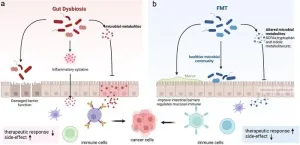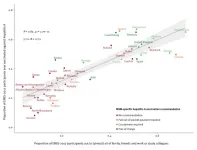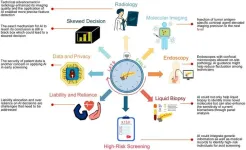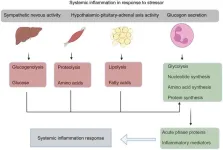The risks of adverse effects and complications from treatment for prostate cancer are substantial and continue for years after treatment ends. The largest comprehensive analysis reporting long-term risks from such treatment relative to the risks faced by a control group of untreated men has just been published in the journal JAMA Oncology.
In the 12 years following treatment, men whose initial treatment was a prostatectomy (removal of all or part of the prostate) had a risk of urinary or sexual complications more than seven times higher than that faced by untreated men. For men whose first treatment was radiotherapy, the risk of such complications that was almost three times that of untreated men. Additionally, men in the radiotherapy group faced three times the risk of a bladder cancer diagnosis.
The report – by researchers from the SWOG Cancer Research Network, a clinical trials group funded by the National Cancer Institute (NCI), part of the National Institutes of Health (NIH), along with researchers from the NCI – argues that men need to have access to risk numbers such as these when deciding whether to even be screened for prostate cancer.
“This study throws down a major gauntlet to all physicians to give patients this information before they even begin the process of drawing a PSA test,” said the paper’s senior author Ian M. Thompson, Jr., MD, of CHRISTUS Santa Rosa Health System and The University of Texas Health Science Center at San Antonio. A PSA test measures the blood level of a protein called prostate-specific antigen.
Roughly 30 million men in the U.S. are in the age range (55-69 years) for which the U.S. Preventive Services Task Force recommends discussing PSA testing with their doctor. Making an informed decision requires that they have a clear understanding of the magnitude of the potential risks and benefits of screening, and of each step that might follow it, which can include a biopsy and one or more treatments if prostate cancer is found.
One challenge in determining the risk of adverse effects from prostate cancer treatment is that for some of these conditions, such as erectile dysfunction, the incidence increases with age. So, a true measure of risk can be determined only by comparing men treated for prostate cancer with untreated men of similar age in the general population. The JAMA Oncology study does just that.
“Past studies of prostate cancer treatment complications have had small sample sizes, limited follow up, or the absence of a valid control group,” said lead author Joseph Unger, PhD. “Our study is distinguished by long follow-up, out to 12 years, looking at a broad spectrum of key complications. Critically, we were able to compare treated men to a representative control group of untreated men, which prior studies have not included.”
The issue of comparing to a valid control group is key, Dr. Unger noted: “Without this, it is difficult to understand the true magnitude of treatment complications.”
Dr. Unger is a biostatistician and health services researcher with SWOG Statistics and Data Management Center and associate professor at Fred Hutch Cancer Center.
The researchers studied almost 52,000 men who had enrolled to one of two large NCI prevention studies – the Prostate Cancer Prevention Study (PCPT) and the Selenium and Vitamin E Cancer Prevention Trial (SELECT).
To track participants’ diagnoses and treatment, they linked trial data to Medicare claims data, identifying 29,196 participants who had Medicare claims available and met other eligibility criteria. Among these, 3,946 had been diagnosed with prostate cancer, including 655 whose first treatment for the disease was a prostatectomy and 1,056 whose first treatment was radiotherapy.
Participants who had been diagnosed with prostate cancer but had not received treatment (because this cancer tends to grow slowly, many men choose active surveillance), along with those who had not been diagnosed with prostate cancer, served as an untreated control group for comparison.
For both groups, the research team examined the Medicare claims data for instances of 10 potential treatment-related complications and adverse effects: urethral stricture, placement of an artificial urinary sphincter (for severe incontinence), placement of a penile prosthesis, urinary incontinence, erectile dysfunction, radiation cystitis, radiation proctitis, bladder cancer, bladder cancer followed by cystectomy, and rectal cancer.
Those in the prostatectomy group had a 12-year risk of having at least one of these 10 complications that was more than six times (6.57) greater than the risk faced by untreated participants.
For men in the radiotherapy group, their 12-year risk of experiencing at least one of the 10 complications was 3.04 times greater than it was for those who had not been treated.
Moreover, after 12 years, those in the radiotherapy group were almost three times (2.78) as likely as untreated participants to have been diagnosed with bladder cancer, which is often of higher grade in those who previously had radiotherapy.
The authors argue that given the uncertain benefit of prostate cancer treatment for most patients, these findings highlight the importance of patient counseling before treatment and before screening.
They specifically recommend that quantitative information on the risks and benefits of prostate cancer treatment be included in national cancer screening and treatment guidelines. No national organization currently provides such quantitative information in their guidelines.
This research was supported in part by the NIH/NCI through grants CA189974, CA182883, and legacy grant CA37429 and in part by The Hope Foundation for Cancer Research.
In addition to Drs. Unger and Thompson, co-authors on the study included Cathee Till, MS, and Catherine M. Tangen, DrPH, both of SWOG Statistics and Data Management Center and Fred Hutch Cancer Center; Dawn L. Hershman, MD, of Columbia University Medical Center; Phyllis J. Goodman, MS, Michael LeBlanc, PhD, William E. Barlow, PhD, and Riha Vaidya, PhD, all of SWOG Statistics and Data Management Center and Fred Hutch Cancer Center; and Lori M. Minasian, MD, and Howard L. Parnes, MD, both of Division of Cancer Prevention, U.S. National Cancer Institute.
SWOG Cancer Research Network is part of the National Cancer Institute's National Clinical Trials Network and the NCI Community Oncology Research Program and is part of the oldest and largest publicly funded cancer research network in the nation. SWOG has 20,000 members in 45 states and eight other countries who design and conduct clinical trials to improve the lives of people with cancer. SWOG trials have directly led to the approval of 14 cancer drugs, changed more than 100 standards of cancer care, and saved more than 3 million years of human life. Learn more at swog.org, and follow us on Twitter (X) at @SWOG.
Reference:
Unger, et al. “Long-Term Adverse Effects and Complications After Prostate Cancer Treatment.” JAMA Oncol. Published online November 7, 2024. doi:10.1001/jamaoncol.2024.4397
END






